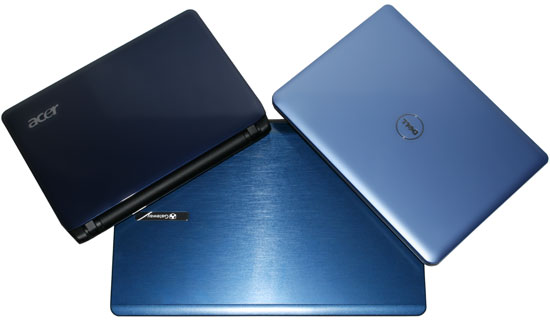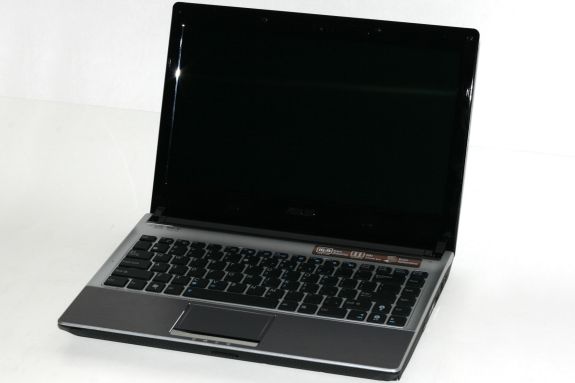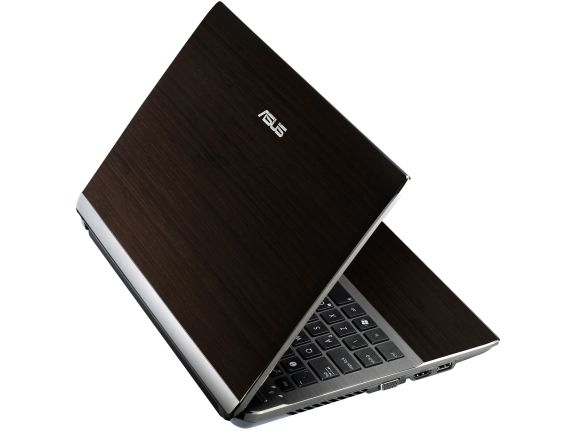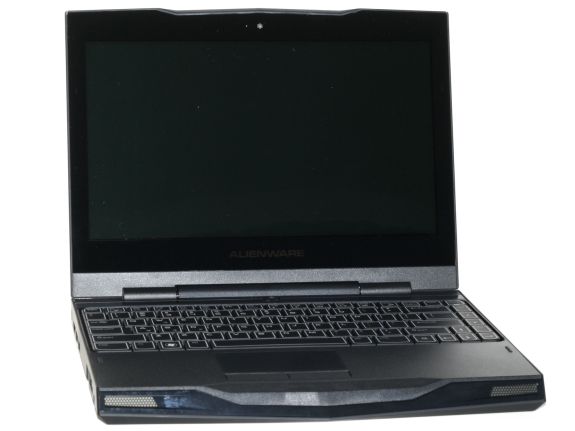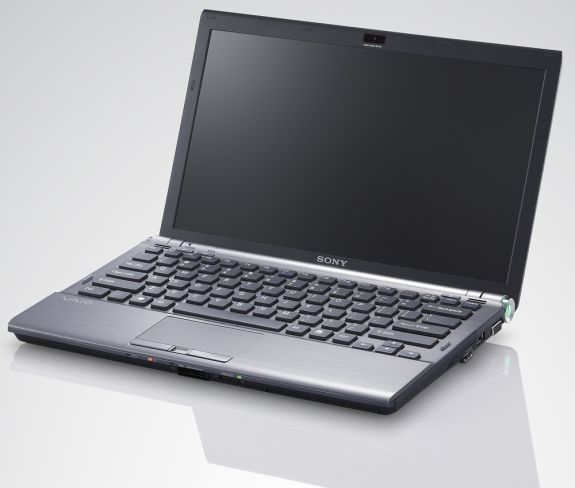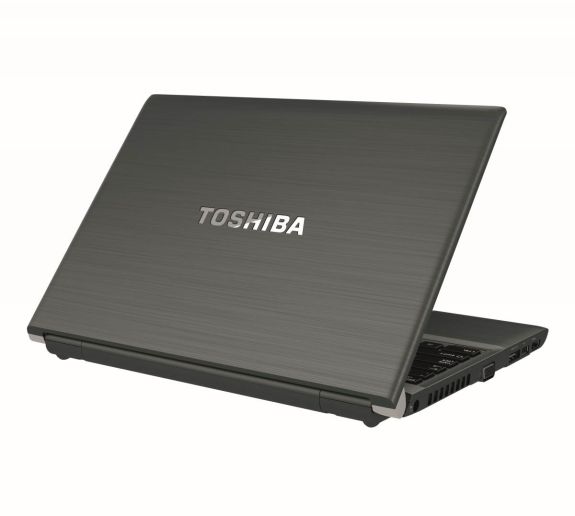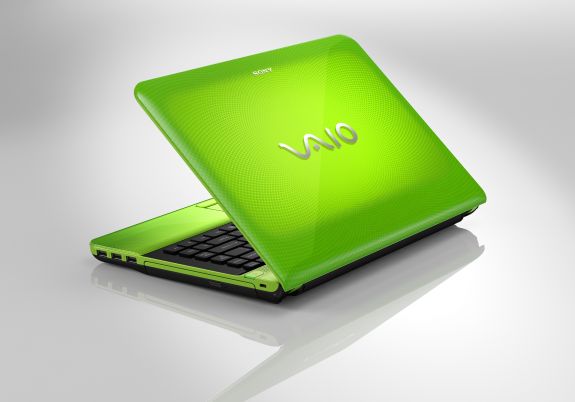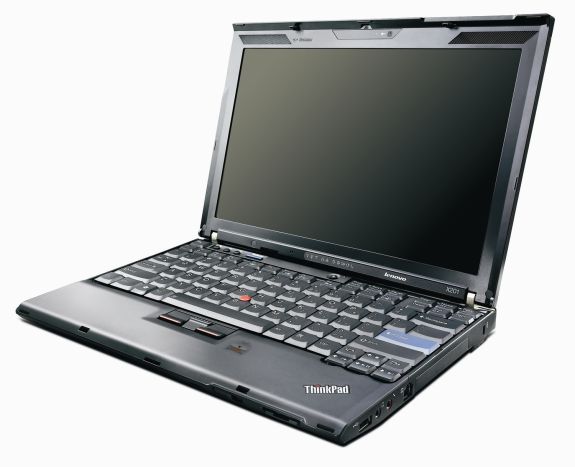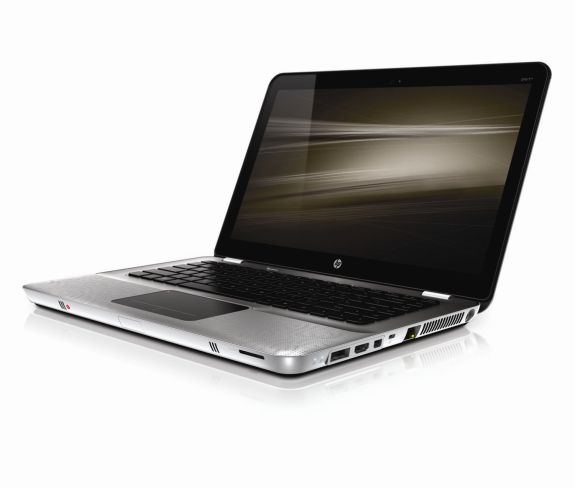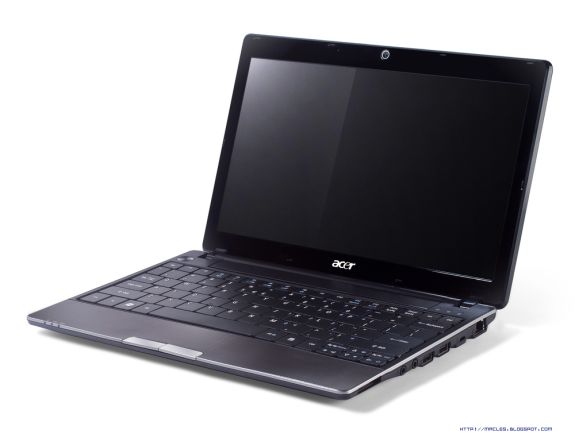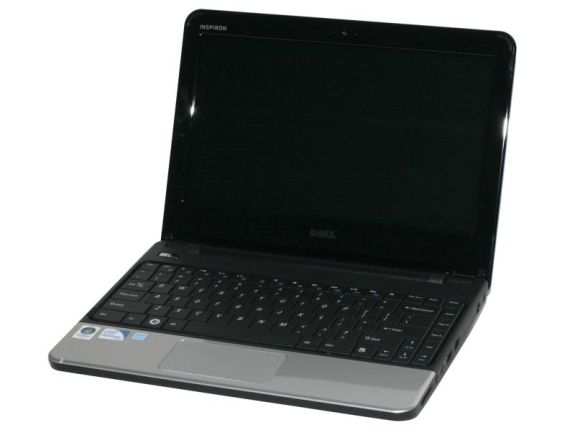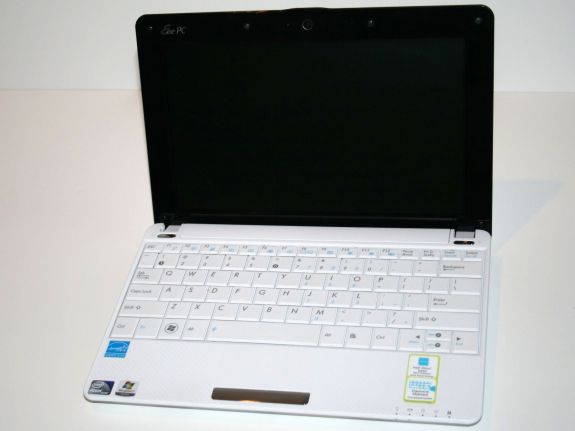
Original Link: https://www.anandtech.com/show/3822/laptop-buyers-guide-14inch-and-smaller
Laptop Buyer's Guide: 14-inch and Smaller
by Vivek Gowri on July 19, 2010 12:01 AM EST
A couple of weeks ago, Dustin published the first part of our Mobile Buyer’s Guide, focused on notebooks and desktop replacements larger than 14”. Now we’re back with the second half, detailing the best choices for portable and ultraportable notebooks and netbooks.
With the back to school season approaching, newly refreshed notebooks are being released on a rapid fire basis. It’s pretty exciting, with tons of new products and new technology platforms hitting the market all at once. While a few months old, Intel’s Core i3/5/7 processors are really starting to ramp up, with standard voltage Core i3/i5/i7 processors essentially taking over the market. The delayed CULV refresh, with low voltage Arrandale chips, is also starting to hit the market in notebooks like the Alienware M11x R2 and Acer’s TimelineX series. Intel’s also done a bit of refresh job on the netbook-class Atom processor, with higher clock speeds, support for DDR3 memory, and a dual core variant expected to hit early Q3.
AMD has its own updates in the pipeline, with tri and quad core Phenom II chips (Danube platform) launching in some of the larger notebooks and their 2010 Ultrathin platform, codenamed Nile, just starting to hit the market. Danube and Nile both share the RS880 chipset and SB820 southbridge, along with a 55nm Radeon HD 4225 integrated graphics chip built on the RV620 core.
And on the graphics front, we’ve got ATI really making some waves with high performance DX11 parts like the HD 5850 and 5870, and on a more mainstream level, the HD 5650 as well. NVIDIA is dominating the portable market, with the Optimus automated graphics switching technology being a real draw for notebook manufacturers. On the higher end, NVIDIA just launched its first mobile DX11 part, based on a cut down version of the beastly Fermi core. More mainstream DX11 parts are in the pipeline for Q3 as well, based on even more scaled down variants of Fermi. And then there’s Next-Gen Ion (or Ion 2, whichever you prefer), which adds a discrete NVIDIA graphics chip and Optimus to Pine Trail based netbooks, making them serviceable HD media playback machines. We’re still waiting for NG ION to hit market (the Acer 532g just got canceled), but it’s supposed to be out this summer as well.
With all of the major chip makers firing on all cylinders, the sheer amount of new laptops on the market is simply astounding. In fact, of the group of laptops mentioned in this guide, just a handful are more than two months old, and there are at least five that are still in the preorder stage, though due to ship in the very near future.
Since this is the “Portable Edition”, we’ll be focusing on laptops mostly this side of 14” screen size, with 13.3” being the most common screen size in our list. We do have a few 14-inchers though, either because they were powerful enough to merit mention in this guide, or because they are slim enough to compare with smaller notebooks. I used 5.0 lbs as the (flexible) upper cap on weight, with sub-4.0 lbs carrying weights preferred. A surprisingly high number of systems on my list claim to top 8 hours of battery life, even with dedicated graphics and standard voltage Core i3/i5/i7 processors – a testament to how far battery life has come in recent years, even with battery tech staying mostly stagnant for some time now.
So, with all the background info out of the way, let’s get to our picks.
All-rounder: ASUS U30Jc/U33Jc/U35Jc
For all around competence, we start with the recently reviewed and Bronze Editor’s Choice winning ASUS U30Jc. We find that 13” notebooks offer the best compromise between performance and portability, being more powerful and more usable than 11” and 12” ultraportables and not as bulky and heavy as 14” and larger notebooks.
The U30 has a standard voltage Core i3 processor, the NVIDIA GeForce 310M + Optimus combo, and a huge battery. It packs in all the power and features that a larger system would, including a DVD drive, in a thin and light package that offers nearly 10 hours of battery life. Add to that the aluminum casing, solid build quality, $890 street price, and ASUS’ growing reputation for producing reliable performance notebooks, and you have the makeup of a winner. However, at 4.8lbs, the U30 chassis weighs the same as the larger 14” UL80 chassis (which we’ll get to in a second) and is heavier than many other 13” notebooks. Not that 4.8lbs is terribly heavy, especially when the battery life is good enough to forgo carrying the AC adapter, but still, it’s one of the few areas that ASUS could improve on (along with the LCD quality, a constant sticking point with any midpriced notebook.)
And improved they have, with the U33Jc and U35Jc. The U35 has all the aluminum-encased, Core i3 + Optimus + 10 hour battery goodness of the U30, but omits the optical drive for the purpose of a much thinner and lighter chassis. With a thickness of 0.6”-1” and a 3.74lb carrying weight (including the massive 84 Wh battery), the U35 is pretty astoundingly svelte for having a standard voltage processor and a dedicated graphics card. So long as you don’t require a DVD drive, you lose nothing relative to the U30Jc. And it’s $70 cheaper to boot. So, to recap, it’s just as powerful, a quarter of an inch thinner, 22% lighter, and a bit cheaper. That’s relative to what was already one of the best performance/portability/price compromises on the market.
But what of the U33Jc, you ask? The U33 starts with the U35 base and adds Intel’s Wireless Display technology, a USB 3.0 port, and - get this - bamboo paneling over the lid and palmrests. According to ASUS, the bamboo paneling lets you show off your ecologically friendly side in style. I’m not sure I buy the environmentally friendly stuff (the wood they use would have to be chemically treated to resist the thermal expansion and warping caused by a notebook’s power output), but it’s definitely a more luxurious direction for laptop aesthetics. I must say, I like the way it looks, but I care about industrial design more than a lot of people. There is an associated price increase with the U33, to the tune of $80 more than the U30. Now, that extra money does get you the WiDi and USB 3.0, so it’s not like the U33 is a bad buy (it is, after all, still a sub-4lb thin and light with a standard voltage CPU, dedicated graphics card, and 10 hours of battery life), but it isn’t as good a value as the others and you do end up paying a premium for style.
But in the end, all three of these notebooks share the same core values: a lot of performance, a bit of style, oodles of battery life and great value in a thin and light package. Not to say that they’re flawless - the display quality is definitely something that could be improved (as with all mainstream notebooks), and the keyboard is fairly mediocre. However, these are merely nits to pick, and overall, the U30Jc, U35Jc, and U33Jc are some of the most complete portable notebooks on the market.
Alternative: ASUS UL30/50/80Jt
The UL80Jt is the Arrandale refresh of the much loved and Silver Editor’s Choice winning UL80Vt. As such, it comes with a proven platform and suitably high expectations. The UL80Jt is nearly as good an all-rounder as the U30Jc, with the main hardware difference being the use of the Arrandale Ultra Low Voltage processor, but keeping the NVIDIA G 310M, Optimus, and the 84 Wh battery. The Core i3/i5/i7 version of CULV is slightly more power hungry than the Core 2 Duo CULV platform we’ve come to know and love, so the UL80Jt likely won’t be able to match the astounding 13.2 hours of battery life that the UL80Vt put up, but it should be able to exceed the already excellent 10 hour figure put up by the U30. We’d expect a best case scenario of 12 hours, and at least 8 hours in normal usage. The UL80Vt is otherwise similar to the U30, with a slightly larger screen, an integrated optical drive, and the same 4.8lbs carrying weight. While only the 14” UL80Jt is out currently, the 13.3” UL30Jt and 15.6” UL50Jt should also be shipping in the near future. Between the UL series and the U30, the choice ends up between performance and battery life - the U30/33/35 should outperform the UL series handily, with its standard voltage Core i3 processor, but offers around 20% poorer battery life on the same size battery.
Gaming Portable: Alienware M11x
This pick is almost a given, but hey, can you blame us? Alienware’s gaming ultraportable has been all the rage since it was unveiled at CES 2010, and for good reason: an overclocked CULV processor and an NVIDIA GT 335M dedicated graphics card in an 11.6”, 4lb frame starting at $799? Yes please!
Now, since then, the familiar Core 2 Duo ULV chip has been replaced with the new Arrandale ULV chips, Optimus has been added, and the pricetag has gone up to $949 (the old C2D model is still available for $799), but the principle behind the M11x remains the same: as much GPU as you can stuff into a 4lb chassis, at as low a price as possible. And given the performance, it’s not a philosophy we can argue with. The GT 335M absolutely screams when compared to basically any other portable notebook, and graphically, this is the most powerful notebook this side of 5.5lbs. So far, so good.
The performance side of the deal only got sweeter when the distinctly not-screaming 1.3GHz C2D was replaced with the new i5/i7 ULV chips. This isn’t to say that the original CULV platform was slow; it was certainly adequate for most tasks and the overclocked version in the original M11x was better still, but it was never a powerhouse and definitely did hold the M11x back in certain games. That goes away for the most part with Arrandale’s dynamic clock speed adjustment that can boost processing frequency to 2.13GHz when needed. And even with all the computing power under the hood, the M11x can still last nearly 8 hours on battery power. Pretty sweet, and certainly worthy of the Silver Editor’s Choice Award we gave it last week.
Which isn’t to say that everything is all and well in the M11x’s world: the styling is polarizing, the build quality and keyboard aren’t anything special, and the lack of Gigabit Ethernet strikes us a bit daft in this day and age. But the biggest issue is the screen. As usual, the panel itself isn’t of particularly high quality, but the bigger problem is that the M11x chassis is easily big enough to handle at least a 12” screen, or a even a 13.3” panel in a pinch. Considering that at 4lbs, it’s about the same size and weight as most 13.3” notebooks, Alienware had no real reason to equip the M11x with just an 11.6” WXGA screen. If they could ship it with a WXGA+ (1440x900 or 1600x900) 13.3” screen, it’d be set. However, these are all nits to pick - it’s still the fastest notebook of it’s size by a long ways.
Alternative #1: Sony VAIO Z series
The Z series from Sony is the only sub 4lb notebook in the same performance range as the M11x. It has standard voltage Core i3/i5/i7 processors and the NVIDIA GT 330M graphics chip, which has less shader cores than the GT 335M (48 vs 72) and a faster clock speed (575MHz vs 450MHz). It also has dual 64GB SSDs in RAID 0 configuration, a high contrast 1600x900 13.1” display, and an integrated DVD burner, all in a 3.04lb package. Also, it carries a neat and tidy $1949 MSRP. Gaming performance is close and general performance is likely far better, but the price is just about double the M11x base price. So, it’s an alternative in that gaming performance will approach the M11x, but it isn’t really a competitor to the M11x in any sense of the word.
Alternative #2: ASUS U30Jc/U33Jc/U35Jc and UL30/50/80Jt
At the same price as the M11x, there is the previously covered ASUS ultraportable lineup, all of which have dedicated graphics cards. Yes, they all share the rather anemic GeForce 310M, but when you’re looking at 4lb laptops that get 10 hours of battery life, any form of dedicated graphics is a plus point. Unfortunately, the GeForce 310M is pretty far from adequate for anything other than older games, so if gaming performance is a high priority, the M11x will still kill all of these.
Road Warrior: Toshiba Portege R700
Toshiba recently celebrated it’s 25th anniversary of manufacturing mobile computers, and in honor of the occasion, took the opportunity to bestow upon us the new Portege R700. The latest in a long and reputable line of superthin and superlight ultraportable notebooks, the R700 (and nearly identical R705 retail model) do not disappoint. At under an inch thick and just 3.2lbs, Toshiba claims that the R700 is the lightest 13.3” notebook with an integrated optical drive. Which is all the more amazing considering the R700 forgoes the Core i3/i5/i7 ULV processors for the real deal - the standard Core i3, i5, and i7 CPUs - and the $799 starting price for the R705. Add in the aluminum chassis with an internal honeycomb structure, the 66 Wh battery rated for 8.5 hours of life, Intel’s Wireless Display tech (R705-only), a fair handful of ports including HDMI and eSATA, optional SSDs, etc, and you’re looking at one very well equipped ultraportable.
I’m particularly impressed by the R705, which has a Core i3 350M, 4GB of DDR3, a 500GB hard drive, Intel HD graphics, and all of the fun stuff I mentioned before, like the aluminum chassis, WiDi, an integrated DVD burner, and 66 Wh battery, for just $799. Which, for a 3.2lb ultraportable, is pretty impressive. They managed to take a fairly standard mainstream notebook and stuff it into a case with the same footprint and carrying weight as the MacBook Air (though obviously a bit thicker). The two really impressive things about that? They still managed to put the optical drive in it, and they didn’t have to sacrifice build quality or the aluminum chassis to keep it under a grand.
I do have a couple of concerns though, starting with the heat output - given Toshiba’s history, and the amount of power they’ve packed into such a thin and light enclosure, I wouldn’t be surprised at all if it got hot enough to double as a mini-stovetop. Okay, maybe that’s a slight exageration, but it won’t be the coolest running notebook on the block for sure. Also, given the price, the LCD panel is bound to be a disappointment (I’d be shocked if it wasn’t.) But against the competition, the R700 cuts a figure that’s somehow smaller and faster while still being reasonably priced, which makes it ideal for on the go users.
Alternative: Lenovo ThinkPad X201
You’ll hear more about this one later, but for the moment, here are the relevant details: 12” screen, full power Core i3/i5/i7 processors, 2.9lb starting weight (4 cell battery), 3.5 lbs with a 9 cell battery rated at an astounding 12 hours of runtime, and the legendary ThinkPad build quality. It lost out to the Toshiba for being about $500 dollars more expensive similarly equipped , not having a DVD drive, and having to choose between a heavier notebook with the 9 cell battery or having less battery life with the 6 cell battery.
Media/HTPC Notebook: Sony EA series
Our pick here was a complicated one. With the launch of the new Core i3/i5/i7 processors, any laptop with a basic Core i3 and Intel’s integrated HD Graphics solution had enough power to handle 1080p video playback and a standard HDMI output for connecting to an HDTV. Even adding the requirement of a Blu-ray drive (fair expectation in a notebook used for media playback) didn’t help much, since most 14”ers from mainstream manufacturers like Dell, HP, and Sony have at least the option of a BD-ROM drive these days for not a whole lot of coin. With standard media playback about the same regardless of notebook, the differentiating factor is going to come from something else.
Something like Intel’s Wireless Display. I really love the concept of WiDi, which is having a notebook wirelessly connect to a TV’s HDMI port. Press a button, and bam, what’s on your notebook screen is on your TV, simple as that. Pretty awesome. Very focused, very user friendly, not a lot else going on. There are a couple of problems, starting with the 720p limitation and the 2 second delay between laptop and TV. Also, you need to buy a $100 box to connect to the TV. The delay isn’t much of a problem, since WiDi will be mostly used for videos, which work smoothly, just 2 seconds behind your laptop. The 720p cap was implemented for bandwidth purposes, but it goes away in the WiDi 2.0 (which also eliminates the delay time). The problem of the box still remains: a Benjamin is pretty pricey for what is essentially the wireless replacement for a $4 HDMI cable. Overall, it’s a slick piece of technology, though it’s still got a ways to go as far as market traction, and some of my fellow editors (*cough*Jarred*cough*) don’t see the value in it. On an economic level, the skepticism makes sense, but it’s a very elegant solution and would make sense for a few specific uses, like watching downloaded and streamed movies on your TV (which is what a lot of HTPCs are used for).
The Sony VAIO EA series is one of the few notebooks that has both WiDi and Bluray. In addition, it has a 14.1” 720p screen, Core i3/i5/i7 processors, Intel HD graphics with an optional ATI Radeon HD 5470, and all the other standard stuff. Oh, and it’s available in every colour of the Skittles rainbow, and then some. The $999 model with an i5-450M, 4GB/500GB, Intel HD, WiDi, and Bluray is probably the best config for purely media purposes. Customizing your own model gets pricey (Sony price gouges on options like no other), so if you need the dedicated graphics you’re probably better off getting a different notebook.
If you don’t need the WiDi, you can look at something like the 14.5” HP dv5t, which is available with a BD-ROM drive starting at $749, though that only has a Pentium P6000 processor at that price and likely poorer build quality and display than the VAIO.
And if you’re more like me and don’t use physical disks anymore, all you need is an HDMI out and a fresh install of VLC, so basically any newer notebook will suffice. 1080p playback is no longer a big deal, any computer costing more than $500 can do it fairly comfortably. So if that’s your only criteria, you have an unlimited number of choices. But for overall media playback versatility, the VAIO EA series is about as good as it gets, with both Bluray capability and Wireless Display.
Business Class: Lenovo ThinkPad X201
Did you honestly expect anything else? This is the quintessential business ultraportable. One of the first notebooks to pull off the now-trendy lack of an optical drive, the X series has a long history of being some of the most reliable and well built ultraportable systems on the market. The latest iteration is the X201, which has, as I mentioned earlier, a 12” widescreen, Core i3/i5/i7 processors, and superlight starting weight.
As a business machine, this rules. Amazing build quality, one of the best keyboards in the business, a matte screen, and basically everything else that that has made the ThinkPad line the standard of the business class for the last twenty years. Magnesium alloy chassis, steel hinges, rugged plastic, rubberized exterior coating, spill-proof keyboard, TrackPoint, Thinklight, the X201 has them all. Granted, this also means that an unwelcome ThinkPad family trait - poor quality LCD panels - is in order too (and no, the old T43p’s 15” IPS panels don’t count; those are ancient history at this point.) Having matte displays is a good thing, but when they’re poor quality panels with low contrast ratios, they’re not so appreciated.
But it’s not all about the ThinkPad stuff, the X201 has the computing prowess to back up the build quality. It’s the lightest computer with standard voltage Core i3/i5/i7 processors, even more so than the R700, which to be fair is a bit larger and has an integrated optical drive. Option up to the 9 cell battery, which bumps the weight up to 3.5lbs, and you get around 12 hours of battery life. That’s a pretty ridiculous figure for something with all the power of a full sized mainstream laptop.
You do end up paying quite a bit for all this business quality ultraportable goodness - the starting $999 price is reasonable, until you realize that it includes a paltry 2GB of memory, a 160GB hard drive, and a 4 cell battery. You can find those components in Walmart for $549 on any given Sunday, so some optional extras are definitely in order. Spec’ed the same as the $799 Toshiba R705 (Core i3, 4GB, 500GB hard drive, 6 cell battery, etc) and you’re looking at right around $1300 for the X201. Interestingly, the touchpad and webcam are optional extras on the X201. Look for a faster processor or WWAN, and you’re talking substantial sums of money. Even if you hit one of Lenovo’s awesome sales, the X201 won’t come cheap.
For a hardcore business user though, nothing this side of 4lbs can beat the ThinkPad’s combination of ruggedness, build quality, power, and battery life, and for that reason the extra few hundred dollars are definitely worth it for the people that care.
Alternative: HP EliteBook 2540p
The only other notebook line I’ve found with build quality even approaching the ThinkPad is HP’s new EliteBook lineup. The 2540p is the smallest EliteBook, a 12” unit like the Lenovo. It also has the standard voltage Core i5-540M, 2GB memory, and a 250GB hard drive at $1099. Also, you don’t have to pay extra for the webcam and touchpad. The aluminum panels on the palmrest and lid are nice, and the silver colour could suit some people’s tastes better than the all-black look of the ThinkPad. But it’s a bit heavier than the X201, starting at 3.4lbs, and has less battery life as well (7.5 hours on a 62 Wh 6 cell). The 2540p is still a great business portable, but it’s not on the level of the ThinkPad.
Mobile Powerhouse: HP ENVY 14
Basically, this is the most power you can stuff into a 14” chassis. HP’s new Envy 14 has an optional Core i7 quad core processor and the Radeon HD 5650 graphics card in a slim 5.25lb aluminum enclosure, and somehow manages to still retail for a semi-reasonable base price of $1099 ($1349 with the base i7-720Q quad-core).
This is especially impressive because the Envy 14 is fairly thin as well, at a constant 1.1”. The Envy line in general has been well designed, and the 14 is no exception. They’ve also been consistently accused of being clones of the Apple MacBook Pro line, and the Envy 14 doesn’t do a whole lot to change that perception. The two lines do share quite a few design characteristics, including the flat lid with tapering edges, the rectangular shape with filleted corners, flat contours and even surfacing the whole way around, etc. Even things like the backlit, black chiclet keyboard, slot loading DVD drive, sealed in battery (though still removable), and “floating” screen are similar. What was that line about great artists and stealing?
But once you get under the skin, none of that matters: the Envy 14 is available with the fastest mobile processors on the planet, and the best graphics card available in a 14” notebook. One potential issue: heaaaat. The larger Envy 15 was reputed to have cooling issues, especially with the quad core processor option. With the same amount of power stuffed into a smaller form factor with less area for heat dissipation, this one’s almost a lock for a ton of heat output. It doesn’t help that the aluminum chassis conducts heat, potentially creating an effect similar to the older MacBook Pros, where the outside of the notebook feels much hotter than normal notebooks do, even though the internal temperatures are within normal operating range and the cooling system is working as it should.
So as long as you don’t mind the hot casing, the Envy 14 is the mobile powerhouse to get. Good build quality and a decent amount of portability to go along with it’s quad core processor and midrange performance graphics card makes it an easy pick for raw computing horsepower.
Alternative: ASUS N82Jq
The N82Jq is another powerful 14-incher from ASUS. As with Dustin, I have my fair share of experiences with powerful ASUS portables, and I can definitely vouch for their performance. The N82Jq outdoes all of it’s predecessors (and most of its peers, too), with the same Core i7-720Q quad as the Envy 14, and the same NVIDIA GT 335M graphics card as the Alienware M11x. The HP gets the nod over the N82 for a few reasons: the HD 5650 is a more powerful graphics card than the GT 335M by a fair margin, and the Envy is available with the higher-clocked 740Q and 840Q quad core processors, while the N82Jq is only a single model offering the 720Q only. Also, the Envy 14’s 14.5” screen has a 1600x900 resolution, which is significantly higher than the 1366x768 of the N82’s 14.1” display. However, the N82 still has it’s upsides, being both lighter and $230 cheaper than a comparably specced Envy. So if you want a well rounded quad-core portable for as little money as possible, the N82Jq is a good way to go, but if you’re looking for the absolute maximum amount of power under the hood, the Envy 14 is the best.
Budget Portable: Acer TimelineX line
The Acer Timeline series was the line of notebooks that really kickstarted the CULV trend in the portable market. Dual core notebooks that were quick and could handle 1080p video, along with 8 hour batteries and $600-800 pricetags, really set the stage for the CULV explosion. It didn’t hurt that the Timelines were very thin, very light, and looked pretty nice to boot. The TimelineX is the updated version of the Timeline series, with Arrandale and Arrandale ULV processors.
The pricepoints remain about the same, as are the laptop sizes - you can choose between 11.6”, 13.3”, 14.1”, and 15.6” form factors (all with the same 1366x768 WXGA resolution, interestingly enough), and on all but the smallest 1830T, you get regular Core i3/i5/i7 processors while still managing the 8 hours of battery life. The 11.6”er makes do with the 2nd generation CULV platform, presumably because the standard voltage chips didn’t pass the required thermal validation. The TimelineX notebooks only come with Core i3 and i5 processors, in line with their budget nature. With the most expensive TimelineX coming in at $829, it’s hard to argue.
Now, with the performance being in line with more expensive portables, the corners have to be cut somewhere to hit the low pricepoints. I can tell you from personal experience with the first generation Timeline series that the first thing to go is build quality, and next is display quality. The build quality is fairly mediocre, with completely plastic casing, flex-laden keyboards, and a general lack of the solid feeling you get from more expensive systems. The screens were subpar as well, though the larger models were better than the 11.6” models, which had grainy screens to go with the low contrast ratio and washed out blacks. These are hopefully improved on the newer and more expensive models, but probably not by much. There is a reason these are some of the least expensive ultraportables on the market, after all.
But the whole goal of a budget system is to stuff as much performance and as many features as possible into a computer with as low a pricetag as possible, and in that, the TimelineX series definitely succeeds.
Honorable Mention: Dell Inspiron 11z
This one has to get a mention: the Dell 11z is selling for $449 with a dual core Pentium SU4100, 2GB memory, 250GB hard drive, and a 56 Wh 6 cell battery. This basically represents the same value theory I presented with the Acer 1410 when I reviewed it, except even more so, since the 11z has the dual core processor and a larger battery, while still being within striking distance of the netbook price points.
With that said, there are a couple of things that need to be pointed out before handing out a real recommendation. One is that the battery sticks out the bottom - a lot of people apparently don’t mind this, but it’s one thing that drives me crazy about extended batteries. The batteries that stick out the back are fine, though. The other thing is the buttonless touchpad. Jarred absolutely abhors it, as do many other 11z owners that I know. I personally don’t find it unbearable, though it’s definitely not a very good trackpad. At $449, I know that I can deal with it, but I’d definitely advise trying it out first and making sure it’s okay before you buy.
Netbook: ASUS Eee 1001P
And now we get to the most technologically stagnant part of the market, in which not much other than the battery life numbers have changed in two years. Ah yes, the wonders of netbooks.
I’m not even exaggerating - just look at the ASUS EEE lineup. The 1000HA came out in October 2008 with the 1.60 GHz Atom N270 processor and was updated 1000HE in February 2009 (1.66 GHz Atom N280 plus an extended battery good for 10 hours of life). That got replaced by the 1005HA in June 2009, part of the new Seashell design language. The 1005HA had identical specs to the 1000HE, but a different chassis design that was sleeker and better looking. Spec-wise, the first (and, to date, only) big change was the switch to Pine Trail processors in December 2009. However, that really didn’t do a whole lot for performance, though it did increase battery life to 14 hours (under ideal conditions). We’re still on Pine Trail and the trusty old N450/GMA 3150 combo, so in just under 2 years, we’ve improved maybe 10% performance-wise and just about doubled battery life. Not that having twice the battery life is a bad thing, just that over 2 years, the lack of any significant performance gains is pretty disappointing for what was already a low performance platform. This is starting to change though, with a much-welcome 10% clock speed boost in the 1.83GHz N470 and the much awaited dual core N550 that is due to ship in Q3.
In the meantime though, we’ll work with what we’ve got. When we reviewed the Eee 1001P, we liked it quite a bit and gave it our Silver Editor’s Choice award. It earned that award on strength of the very good screen, which had matte finish and a superhigh contrast ratio, along with the good styling and build quality. Apart from that, there isn’t much to set it apart from the rest of the netbook pack; the 11 hour battery is on the better side, but still less than the mark set by the 1005PE, and performance is the same across all devices. With not a whole lot to differentiate between netbooks specwise, things like LCD panel and display quality do make a significant difference. With the netbook market not changing much since the last time we evaluated it, our recommendation of the 1001P stands as it was. And now that the street price has gone down to $305, it’s even easier to recommend.
However, there are some interesting choices if you’re looking for something non-standard. The ASUS 1018 comes to mind: it’s made completely of aluminum and is a very svelte 2.26lbs. The new Atom N455 adds support for DDR3 memory, and the battery is slightly smaller than the 1001P’s: 44 Wh and 10 hours of runtime. But it’s pretty pricey, at $429. Different is good, but the same specs for 40% more money? I’d rather get the Dell 11z I mentioned before.
NVIDIA’s ION platform is something that should also be mentioned here. The first generation of ION was never a huge hit in netbooks, coming late in Atom’s release cycle; the only really relevant system that got ION was ASUS’ Eee 1201N, which had a nettop-spec dual-core Atom 330 to go along with ION’s 9400M. Next-Gen ION has thus far been MIA, with one of the two announced devices being canned for unspecified reasons (Acer’s 532g) and the other being delayed until August (the ASUS 1215N, which will replace the 1201N). Given the cost it adds, unless you’re trying to lightly game on a $500 budget, I’d skip ION and go for a cheap CULV machine like the 11z or 1410 for the same price. They are equally capable of HD Flash video and 1080p playback over HDMI, and offer significantly faster processors than the Atom-based ION netbooks.
Portable Notebook Wrap-Up
Based on our picks, there are some clear trends and patterns that we can see. First, in this space, ASUS is a major player. They have a history of making great performing portable computers, and they’re getting better at it over time, especially with respect to battery life. That they consistently manage to pull 10-12 hours of battery life out of systems with dedicated graphics cards (switched off, but still, the GPU is there if you need it) is definitely worthy of commendation. They simply are more well-rounded than many of the other notebooks in this class.
Another thing to notice: all of the notebooks on this list are Intel based. Each and every single one. This isn’t to say that AMD is bad, but the performance and power consumption figures for AMD’s mobile processors simply aren’t competitive with Intel. The K10.5 derived Congo platform performs somewhere in between dual core Atom and the Core 2 Duo CULV platform, while power consumption is about 60% more than the average CULV machine. The new Nile platform, based on the Phenom II architecture, is faster, about on par with the original CULV platform, but even with improved power consumption, battery life still falls short of Intel’s high standard. AMD has a good thing going in the larger notebook space, offering tri- and quad-core processors on the cheap with very good multithreaded performance. Since battery life doesn’t matter as much in desktop replacement systems, the higher power consumption isn’t a significant issue. But in the portable space, when some laptops are hitting 12 and 13 hours of battery life (see the ASUS UL80Vt), seeing an AMD-based notebook struggle to hit 5 or 6 hours of battery life is definitely a problem that we hope AMD can fix.
Not a lot of big names on this list; HP only had a couple of systems, neither of which were from their mainstream consumer line. Of Dell’s two systems, one is an Alienware, and the other made it on the list mostly because Dell has really slashed the price on a soon-to-be-EOL notebook. Toshiba’s R700 is the first truly compelling notebook to come out of the laptop giant in the span of years, probably since the R400 tablet in early 2007. Sony has its niche with beautiful (and expensive) hardware, but not any exceptional portable systems. Acer’s budget systems are decent, but only if you’re on a budget. The build quality just isn’t at a level to compete with more expensive systems. And Lenovo’s consumer level systems aren’t particularly great. Thankfully, the ThinkPad line is still as awesome and solid as ever.
Evaluated as a product segment though, the portable and ultraportable notebook segment is extremely diverse and has a ton of competition for market share. This is great for the consumer, since it leads to well designed and engineered products in all sectors, meaning that anyone can find a system that fits their needs well. This guide is meant to help people in that search, and our picks are notebooks that we feel are the best in their various categories. To an extent, you could also say that we took the notebooks we thought stood out from their peers and then fit the categories around them. If you disagree, feel we missed something, or have any additional thoughts, your comments are most welcome.

